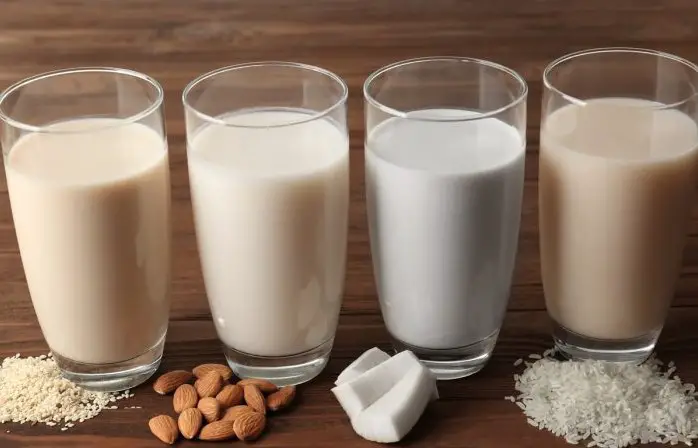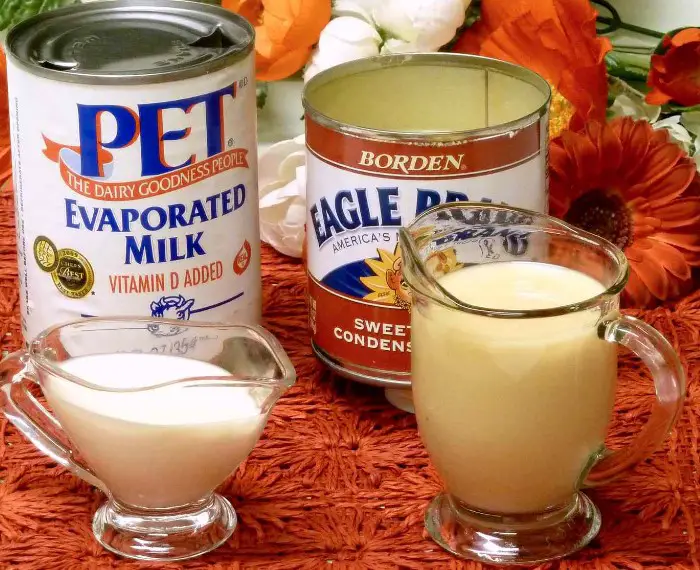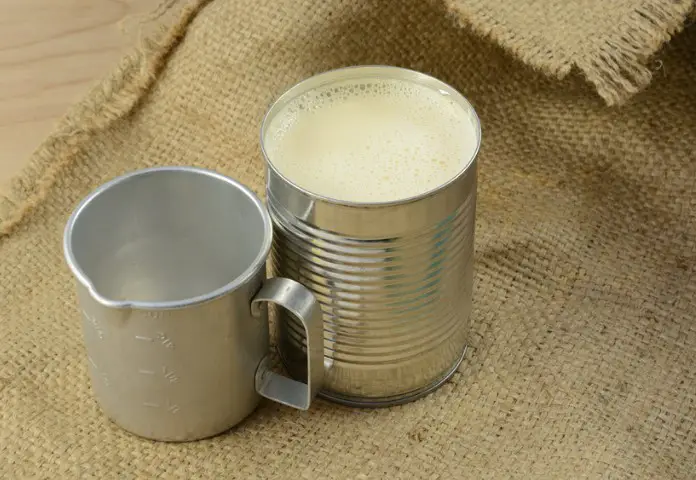Milk has long been heralded as a vital component of a balanced diet, offering a rich source of vitamins, minerals, and proteins. Its ubiquity in daily consumption and culinary practices around the globe underscores its importance. Meanwhile, evaporated milk, a denser and shelf-stable alternative, presents a unique set of characteristics and uses, distinguishing it from its fresh counterpart.
The primary difference between milk and evaporated milk lies in their processing and nutritional content. Milk, in its most common form, is a fluid directly obtained from animals that is rich in nutrients, while evaporated milk is milk from which about 60% of water has been removed, and it’s then canned and heat-sterilized. This process gives evaporated milk a distinct flavor and a longer shelf life without the need for refrigeration until opened.
Evaporated milk serves not just as a milk substitute but also as a culinary ingredient with specific benefits, including a creamier texture and enhanced shelf stability, making it an excellent choice for cooking and baking. Its concentrated nature allows it to add richness and depth to dishes, from sweet treats to savory sauces, without altering the liquid balance significantly.

Milk Essentials
Definition and Types
What is Milk?
Milk, a nutrient-rich fluid, is produced by the mammary glands of mammals. It serves as the primary source of nutrition for newborn mammals before they are able to digest other types of food. The versatility of milk extends beyond just a drink; it’s a crucial ingredient in a myriad of culinary creations, from baked goods to creamy sauces.
Common Types of Milk
Milk comes in various forms, tailored to dietary needs, taste preferences, and nutritional requirements. The most common types include:
- Whole milk: Full-fat milk with about 3.5% milk fat.
- Skim milk: Fat-free with less than 0.5% milk fat.
- 2% and 1% milk: Reduced-fat options offering a middle ground.
- Lactose-free milk: Specially processed for those with lactose intolerance.
- Plant-based alternatives: Such as almond, soy, and oat milk, catering to vegans and those with dairy allergies.
Nutritional Profile
Key Nutrients in Milk
Milk is celebrated for its comprehensive nutritional profile, encompassing essential vitamins and minerals. Notable nutrients include:
- Calcium: Vital for bone health.
- Protein: Crucial for muscle repair and growth.
- Vitamin D: Supports calcium absorption and bone health.
- B Vitamins: Play a role in energy production and brain function.
Health Benefits
The consumption of milk offers numerous health benefits, including:
- Strengthening bones and teeth due to its high calcium and vitamin D content.
- Supporting muscle development and repair through its protein content.
- Enhancing immune system function with vitamins and minerals.
Evaporated Milk Explained
Definition
What is Evaporated Milk?
Evaporated milk is regular milk that has had about 60% of its water content removed. The result is a thicker, creamier product that can be stored for longer periods without refrigeration. This process intensifies the flavor and increases the shelf life, making it a convenient staple in pantries around the world.
How It’s Made
The process of making evaporated milk involves:
- Heating milk: To reduce its water content.
- Homogenization: To prevent milk fat from separating.
- Canning: The concentrated milk is then canned and sterilized.
Nutritional Differences
Comparison with Regular Milk
While evaporated milk and regular milk start from the same source, the removal of water from evaporated milk concentrates its nutrients, making it richer in calories and nutrients per volume. However, when diluted back to its original water content, its nutritional profile closely resembles that of the starting milk.
Health Implications
The concentration of nutrients in evaporated milk means it can be a beneficial choice for those looking to increase their intake of calcium, protein, and other nutrients. However, it’s also higher in calories and sugar concentration, making moderation key.
Culinary Uses
Milk in Recipes
How Milk is Used in Cooking and Baking
Milk is a foundational ingredient in culinary arts, enhancing flavor, texture, and nutritional value. Its roles include:
- Moisture: Adds moisture to baked goods.
- Tenderness: Milk’s fat content helps tenderize.
- Flavor enhancer: Complements both sweet and savory dishes.
The Role of Milk in Flavor and Texture
The creamy texture and mild flavor of milk make it an indispensable ingredient in recipes ranging from smoothies to sauces, contributing to a richer taste and smoother consistency.
Evaporated Milk in the Kitchen
Specific Uses of Evaporated Milk
Evaporated milk finds its place in a variety of dishes, thanks to its richness and versatility:
- Coffee and tea: Adds creaminess without diluting flavor.
- Baking: Provides a dense, moist texture in cakes and bread.
- Cooking: Enhances soups and sauces with a creamy consistency.
Substitute for Milk in Recipes
Evaporated milk can serve as a substitute for fresh milk in many recipes. To replace fresh milk, mix equal parts of evaporated milk with water. This substitution is especially useful in recipes requiring a rich, creamy texture without additional moisture.

Shelf Life and Storage
Milk Storage
How to Store Milk
Proper storage of milk is crucial to maintain its freshness and nutritional value. Here are some key steps to ensure your milk stays fresh longer:
- Refrigeration: Keep milk at or below 40°F (4°C).
- Original Container: Store milk in its original container to avoid absorption of odors.
- Avoid Light: Keep milk away from direct sunlight and strong light sources to prevent vitamin breakdown.
Signs of Spoilage
Recognizing when milk has spoiled can save you from an unpleasant experience. Key signs include:
- Sour Smell: A strong, off-putting odor is the first sign of spoiled milk.
- Clumping: Curdled milk indicates it’s time to throw it away.
- Taste Test: A sour taste is a clear indicator of spoilage.
Storing Evaporated Milk
Shelf Life Differences
Evaporated milk boasts a significantly longer shelf life than fresh milk due to its reduced water content and sterilization process. Unopened cans can last for months or even years when stored properly.
Storage Tips for Opened Cans
Once opened, evaporated milk needs to be treated differently:
- Refrigeration: Store in the refrigerator in an airtight container.
- Use Quickly: Consume within 5 days for best quality.
- Don’t Store in the Can: Transfer to a glass or plastic container to avoid a metallic taste.

Pros and Cons
Milk Advantages
Benefits of Using Milk in Daily Diet
Incorporating milk into your daily diet can offer a range of health benefits:
- Bone Health: Rich in calcium and vitamin D, milk strengthens bones and teeth.
- Muscle Building: The high-quality protein in milk aids in muscle repair and growth.
- Hydration: Milk is a good source of hydration, crucial for bodily functions.
Evaporated Milk Benefits
Convenience and Longer Shelf Life
Evaporated milk is a pantry staple thanks to its convenience and extended shelf life, making it a reliable ingredient for those unexpected baking sessions or when fresh milk is not available.
When to Choose Evaporated Milk Over Regular Milk
Opt for evaporated milk when you need a creamier texture in your recipes without adding extra moisture, or when you require a milk product that can withstand long storage periods without refrigeration.
Considerations
Dietary Restrictions
When choosing between milk and evaporated milk, consider any dietary restrictions. For example, those with lactose intolerance may opt for lactose-free versions or plant-based alternatives.
Lactose Content Comparison
Both regular milk and evaporated milk contain lactose, but the process of evaporation concentrates the lactose in evaporated milk, potentially making it more difficult for individuals with lactose intolerance to digest. However, lactose-free evaporated milk is also available for those who need it.

Frequently Asked Questions
Can I use evaporated milk instead of regular milk?
Yes, evaporated milk can be used as a substitute for regular milk in many recipes. To replace regular milk, mix one part evaporated milk with one part water to mimic the consistency and nutritional profile of standard milk. This substitution works well in both cooking and baking.
Is evaporated milk healthier than regular milk?
Evaporated milk and regular milk have similar nutritional profiles, but the former is more concentrated, meaning it has a slightly higher content of nutrients and calories per volume. However, when diluted back to regular milk’s consistency, their nutritional values are nearly identical, making neither inherently healthier than the other.
Does evaporated milk taste the same as regular milk?
Evaporated milk has a slightly caramelized flavor and darker color due to the heating process it undergoes. This gives it a distinct taste compared to fresh milk. While some might find this flavor richer or more desirable, especially in certain recipes, it does not taste exactly the same as regular milk.
How long does evaporated milk last after opening?
Once opened, evaporated milk should be stored in the refrigerator and ideally used within five days. To extend its shelf life, transfer it from the can to an airtight container to prevent contamination and odor absorption from other foods.
Conclusion
In conclusion, while milk and evaporated milk originate from the same source, their differences in processing lead to distinct characteristics, uses, and benefits. Each has its place in the kitchen, with evaporated milk offering a convenient, long-lasting alternative that can enrich recipes with its creamy texture and unique flavor. Understanding these differences enables individuals to make informed choices based on their culinary needs, dietary preferences, and storage capabilities.
Choosing between milk and evaporated milk depends on the specific requirements of a recipe, personal taste preferences, and nutritional considerations. By leveraging the unique qualities of each, one can enhance the flavor, texture, and nutritional value of a wide array of dishes, making every meal a delightful experience.
